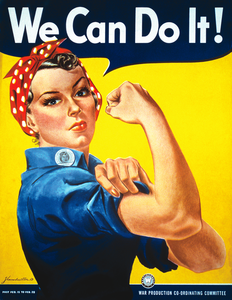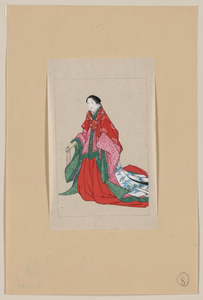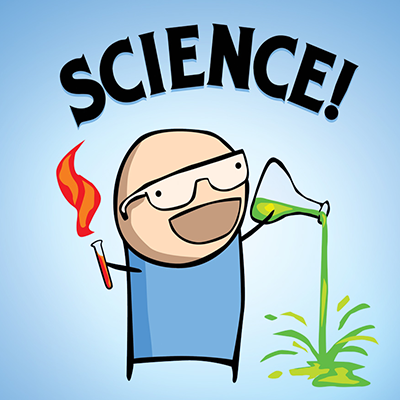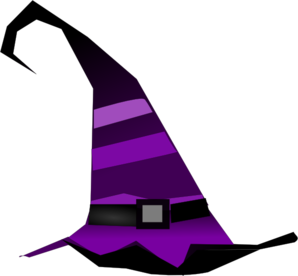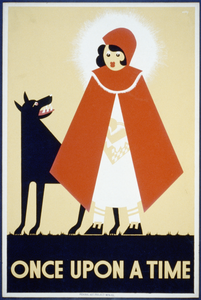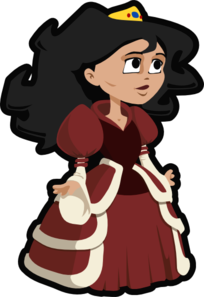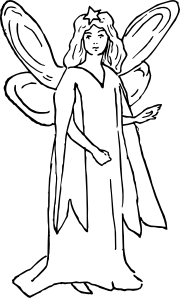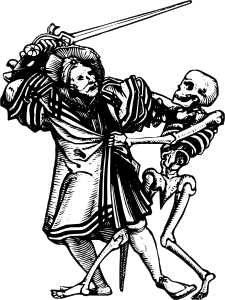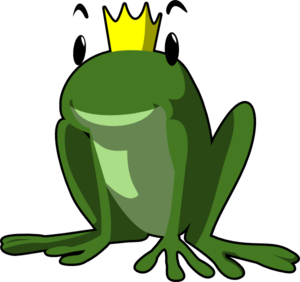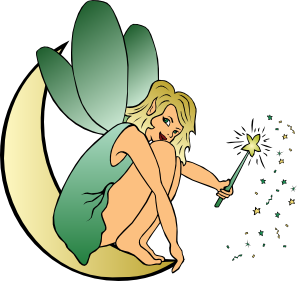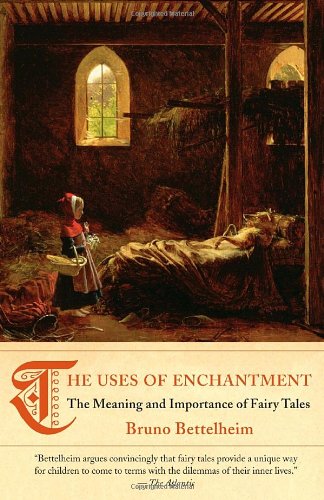Hello! Welcome to the fourth and finals installment of my fairy tales series: gender roles. I promise not to bash Disney too much.
This post is about gender in fairy tales, specifically females. We don't want to leave out the boys, because we know there are lots of strong male heroes in fairy tales already that they can relate to. You are reading fairy tales to your boys, right? Involving them in storytelling? Ignoring the marketing that says superheroes are for boys and princesses are for girls? Good. I'd like to focus on princesses.
And it's not just Disney. All you have to do is Google for "videogames and girls" and "superheroes and girls" and you'll find enough material to keep you reading for days about the lack of good representations of strong women in children's media. Why is this important? The fact is that little girls look to the women in their lives so they can emulate them.
 |
Disney
When you think of fairy tales and, be honest: what pops into your mind? Disney princesses, right? Now, I promised not to bash Disney too much. I grew up with them; my favorites were the Little Mermaid and Belle (mainly because she was a bookworm). I enjoyed Tangled and I love Alan Menken's music. Disney has classic, timeless stories, but the fact is that most of their female protagonists are princesses that need to be rescued because they have very little power of their own. You may have heard the theory that Belle has Stockholm Syndrome. Ariel literally doesn't have a voice. Cinderella cries until her fairy godmother shows up. Occasionally, Disney will give us a character like Mulan, who saves the empire. Frozen comes close, since the main conflict is Elsa learning to open up and stop letting fear rule her. And she does save her sister at the end, which gives this movie bonus points.And it's not just Disney. All you have to do is Google for "videogames and girls" and "superheroes and girls" and you'll find enough material to keep you reading for days about the lack of good representations of strong women in children's media. Why is this important? The fact is that little girls look to the women in their lives so they can emulate them.
Role Models
One idea Bettelheim mentions is that it does not matter if the protagonist of the story is male or female; children can identify with them no matter who they are. I have a problem with this because, while children have loose concepts of gender, they still identify with those most like them. Children's stories star children, not adults. And while children can certainly identify problems in the story as their own, their play reflects the gender roles they see in the world. As children grow, they see someone like them act a certain way and emulate them. If boys see primarily heroes and girls see primarily helpless princesses, then those are the behaviors they're going to copy. Research supports this as well. Here's an article from the Guardian http://www.theguardian.com/women-in-leadership/women-leadership-blog/2014/oct/22/women-role-model-penguin and this one from APA. http://www.apa.org/monitor/nov00/mentoring.aspxMighty Girls
Some have started offering solutions to the lack of strong women. There's a fantastic movement called Mighty Girls, a collaboration between Amy Poehler and Tina Fey. Together, they show girls real-life heroes that are women as well as modern fairy tales with a focus on heroines. Target, meanwhile, recently decided to stop sorting their toys by gender so that boys and girls can choose toys without bias.
So if our early experiences provide models for us and shape our perceptions, what does that mean for fairy tales?
Wait, wait, put down those pitchforks! Don't light your torches just yet. Because, as it turns out, we only get out of stories what we put into them. Even Belle's Stockholm Syndrome (some language in the previous link).
The classic fairy tales by Grimm and Hans Christian Anderson show a different side of princesses from Disney. These princesses have agency, making choices in their own lives. Remember Bowdler? Changing fairy tales lessen's women's roles as well.
Grimm's Cinderella, for example, is very much the maker of her own destiny. She's the one who buries her mother in the backyard, waters the resulting tree with her tears, and completes the tasks her stepmother sets her (with a little help). She repeatedly asks to go to the ball, even when told "no," and actively hides from the prince using cleverness. This is a far cry from simplified versions, in which a fairy godmother simply appears at the right time.
The Grimm Truth
Grimm's Cinderella, for example, is very much the maker of her own destiny. She's the one who buries her mother in the backyard, waters the resulting tree with her tears, and completes the tasks her stepmother sets her (with a little help). She repeatedly asks to go to the ball, even when told "no," and actively hides from the prince using cleverness. This is a far cry from simplified versions, in which a fairy godmother simply appears at the right time.
The Little Mermaid, meanwhile, is a beautiful story of true love and sacrifice. In order to gain her legs, she must feel as if she's being split apart; when she walks, it will be as if she were walking on sharp knives. When she finally meets the prince for which she suffers so much, he's already engaged to be married. At the end, she chooses his happiness rather than her own by refusing to kill him on his wedding night, fully accepting the consequence that she would turn into sea foam. Her sacrifice is rewarded when she is allowed to remain as a spirit watching over the happy couple.
It turns out that Tangled, Beauty and the Beast, Mulan,http://ancientstandard.com/2011/06/17/the-real-story-of-mulan and Frozen are true to the spirit of the source material, at least, while there are several others that Disney hasn't made yet, including Hansel and Gretel, East of the Sun and West of the Moon, and The Seven Ravens.
You can see that there are some great heroines in fairy tales. Now, you might argue that the main goal of these women is still to find their prince. But something I found interesting is Bettelheim's theory that a main theme in fairy tales is maturity. I've already talked about what heroes can teach children, and the ability to make good decisions is a sign of maturity.
It turns out that Tangled, Beauty and the Beast, Mulan,http://ancientstandard.com/2011/06/17/the-real-story-of-mulan and Frozen are true to the spirit of the source material, at least, while there are several others that Disney hasn't made yet, including Hansel and Gretel, East of the Sun and West of the Moon, and The Seven Ravens.
Happily Ever After
Sleeping Beauty, for example. She pricks her finger at 16 (or 15). What usually happens at 15 or 16? In medieval times, it meant that children started getting older, prepared to be married or to take on an apprenticeship. Girls turned into women, ready to start bearing children. So, according to Bettelheim, Beauty turns 16, she pricks her finger, bleeds, and enters a resting state. This state represents the reflection that we all go through when we mature. We may write in journals, listen to music, talk to others about who we are. We're introspective. Now the prince, after a certain period of time, must struggle to save the princess. He represents the battles and trials that we go through in adolescence on our way to adulthood.
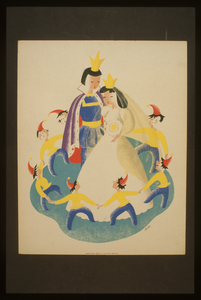 Snow White shows this as well. Her happily ever after cannot come after she escapes the queen; she is still a child. Instead, she is warned against danger and falls to temptation several times. Just like Sleeping Beauty, the heroine falls into a deep sleep for a long time. When the poisoned apple falls from her mouth, she is able to wake up having finally learned from her mistakes and ready to enter adult life. The prince, meanwhile, must win her from the dwarves and gives them whatever they ask. He must fight for her. And what do we want? To be worth fighting for!
Snow White shows this as well. Her happily ever after cannot come after she escapes the queen; she is still a child. Instead, she is warned against danger and falls to temptation several times. Just like Sleeping Beauty, the heroine falls into a deep sleep for a long time. When the poisoned apple falls from her mouth, she is able to wake up having finally learned from her mistakes and ready to enter adult life. The prince, meanwhile, must win her from the dwarves and gives them whatever they ask. He must fight for her. And what do we want? To be worth fighting for!
Then there's the fact that many fairy tales that don't end with a wedding at all. The 3 Wishes and the Fisherman's Tale are both about couples who are already married. Rumpelstiltskin doesn't end until the queen's child is already born, long after she marries the king. Her trial comes when she must use her resources to find Rumplestiltskin's name.
Children learn from the world around them. The messages they take from various sources will be entirely their own, based on the struggles they are going through. It's up to us to make sure the children have the freedom to make those choices while being there to talk them through it.
"This is exactly the message that fairy tales get across to the child in manifold form: that a struggle against severe difficulties in life is unavoidable, is an intrinsic part of human existence--but that if one does not shy away, but steadfastly meets unexpected and often unjust hardships, one masters all obstacles and at the end emerges victorious." --Bruno Bettelheim, The Uses of Enchantment: the Meaning and Importance of Fairy Tales
All images from clker.com
 Snow White shows this as well. Her happily ever after cannot come after she escapes the queen; she is still a child. Instead, she is warned against danger and falls to temptation several times. Just like Sleeping Beauty, the heroine falls into a deep sleep for a long time. When the poisoned apple falls from her mouth, she is able to wake up having finally learned from her mistakes and ready to enter adult life. The prince, meanwhile, must win her from the dwarves and gives them whatever they ask. He must fight for her. And what do we want? To be worth fighting for!
Snow White shows this as well. Her happily ever after cannot come after she escapes the queen; she is still a child. Instead, she is warned against danger and falls to temptation several times. Just like Sleeping Beauty, the heroine falls into a deep sleep for a long time. When the poisoned apple falls from her mouth, she is able to wake up having finally learned from her mistakes and ready to enter adult life. The prince, meanwhile, must win her from the dwarves and gives them whatever they ask. He must fight for her. And what do we want? To be worth fighting for!Then there's the fact that many fairy tales that don't end with a wedding at all. The 3 Wishes and the Fisherman's Tale are both about couples who are already married. Rumpelstiltskin doesn't end until the queen's child is already born, long after she marries the king. Her trial comes when she must use her resources to find Rumplestiltskin's name.
The Moral
"This is exactly the message that fairy tales get across to the child in manifold form: that a struggle against severe difficulties in life is unavoidable, is an intrinsic part of human existence--but that if one does not shy away, but steadfastly meets unexpected and often unjust hardships, one masters all obstacles and at the end emerges victorious." --Bruno Bettelheim, The Uses of Enchantment: the Meaning and Importance of Fairy Tales
All images from clker.com





